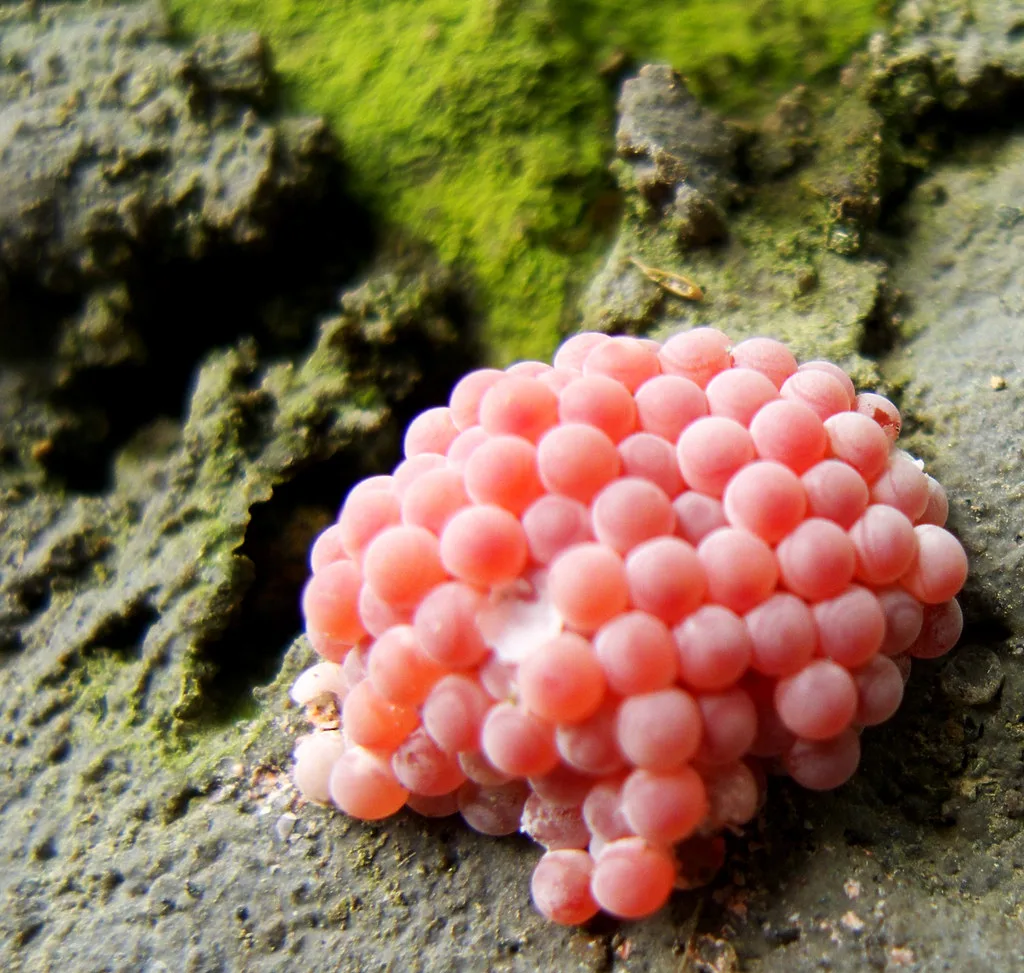
Table of Contents
It’s possible that you’ll occasionally see unusual animals in your garden, as plants serve as natural homes for hundreds of animal species. However, care must be taken not to feed any animals that could endanger the safety of your home or yard. If you notice clusters of pink eggs on leaves or other surfaces in your garden, you should be concerned. The apple snail (Pomasia canaliculata), an invasive species known to disrupt the natural balance of our surroundings, is the source of these vibrant pink eggs.
The freshwater snail, or apple snail, is considered one of the worst horticultural pests. These invasive animals have the potential to completely destroy your garden, eat your plants, and eat fish and other native animals for the same resources. Their bright pink eggs are a testament to their strength and small size.
Although they are water snails, apple snails lay their eggs in clusters above the water line, so if your yard is infested, you’ll see them there. When touched by humans, the neurotoxic surface of the egg can irritate the skin and eyes. It is also advised that you keep your children and pets away from egg clusters. Fortunately, there are ways to get rid of these unwanted pests in your yard their eggs before they establish themselves.
Read more: How To Repel Bugs Naturally
Removal Methods For Apple Snails And Pink Eggs

Apple snail management is difficult. Since freshwater snails are often only found in bodies of water, getting rid of them will be difficult as you are unlikely to go looking for them. One way to do this is to remove a freshwater source from your yard. Some natural predators of apple snails are raccoons, limpkins, and snail moths. However, these hunters won’t help you unless you have an army of birds and raccoons.
If you find snails in your yard, you can pick them up and kill them, but the best strategy for reducing their population is to target their next generation, those pesky pink eggs. Two pieces of cardboard can be used to break the eggs and remove them from the surface they are on. If you find some mature snails in the garden, you can pick them up and remove them.
Don’t forget to wear protective gloves before looking for snails or their eggs. Apple snails are carriers of the rat lung parasite, which can severely infect the brain of humans. Although the usual way to acquire this parasite is through food eating raw or undercooked snails, it is also believed that you can contact the parasite by handling an infected snail whose mucus contains the parasite’s larvae.
Preventive Options

Depriving unwanted animals of their resources and forcing them to seek food, water and shelter elsewhere is the best way to combat them in your garden. Removing sources of fresh water is an excellent preventative measure because apple snails typically live in and around your yard submerged in fresh water. After draining the water you can now identify the snails in the water body.
This technique is often used by rice farmers in Asia and Louisiana, but to save your plants and animals, you may want to empty the freshwater ponds in your yard that attract apple snails. Algae in ponds also serve as food for apple snails. For advice on how to properly clean your landscape, see a pond specialist pond to remove one of the snails’ food sources.
Obviously, there are situations when emptying your pool is not an option. As a preventative measure against apple snails in water, you should avoid using certain molluscicides or chemical snail killers. Some copper-based molluscides, although some are biodegradable, are known to have negative side effects on aquatic fish species. The most effective way to prevent this is to find the bright pink eggs and remove them before they become molluscs.
READ | 5 Natural Ways to Get Rid of Slugs in Your Garden
READ | 7 remedies to get pill bugs out of your home


1 thought on “The Pink Egg Trouble: Dealing with Unexpected Findings in Your Garden”